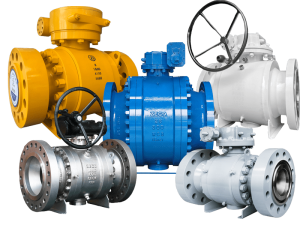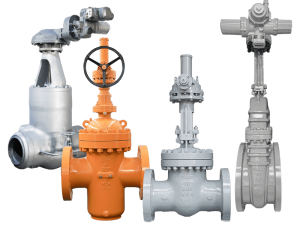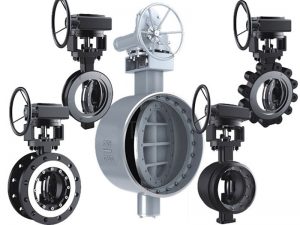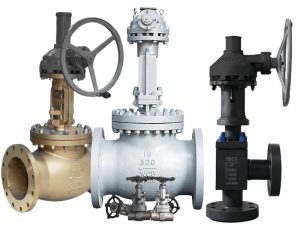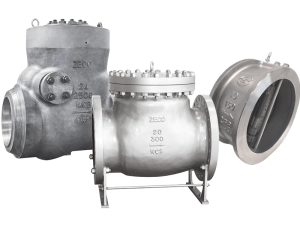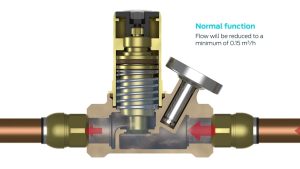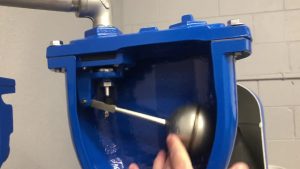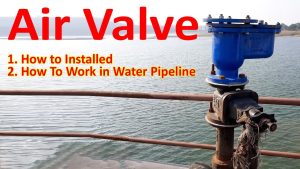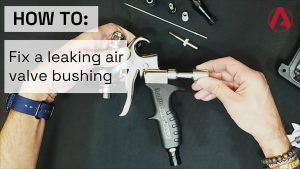Bir bilgisayarın işlevi nedir? çek valf? Bu isimsiz kahramanlar, evinizin su tesisatından nükleer reaktörlere kadar sistemlerdeki feci arızaları önler. Bu basit cihazın ekipmanı nasıl koruduğunu, milyonlarca hasarı nasıl önlediğini ve endüstri mühendislerinin 92%'sinin neden bunları sistem bütünlüğü için tartışılmaz olarak adlandırdığını inceleyelim.
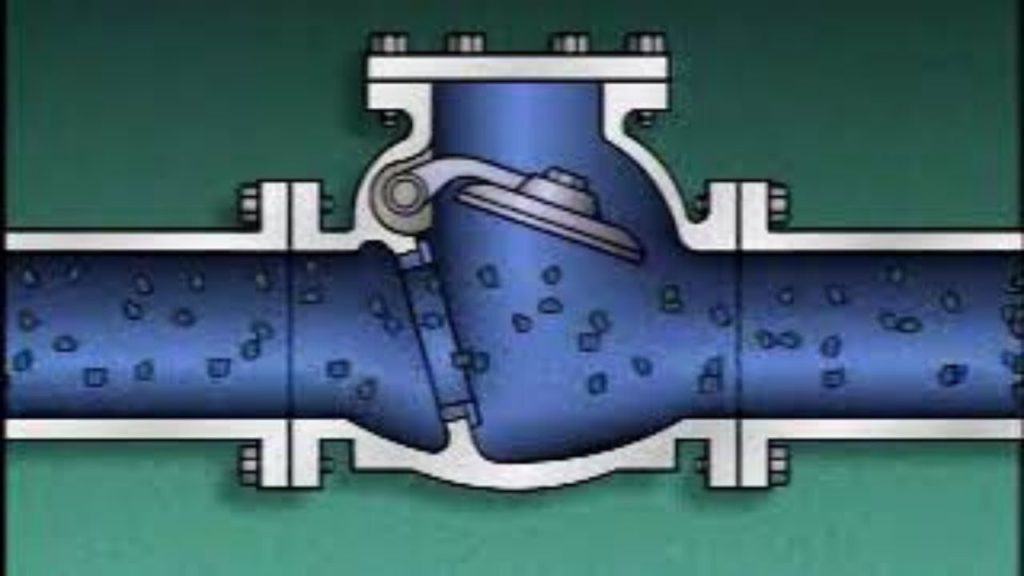
İçindekiler tablosu
Çek Valfler Nasıl Çalışır? Otomatik Koruyucu
Sıvı doğru şekilde aktığında valf açık kalır. Akışı tersine çevirirsek? Anında kapanır. İnsan müdahalesi yok. Güç kaynağı yok. Sadece fizik.
Çekirdek mekaniği:
- Basınç farkı iç mekanizmayı (disk, bilye veya diyafram) açmaya veya kapatmaya zorlar
- Çatlama basıncı (minimum yukarı akış basıncı) aktivasyon eşiğini belirler
- Yerçekimi/spring destekli kapatma Akışın tersine çevrilmesi sırasında hızlı kapanma sağlar
Bunu boru hatları için bir gece kulübü fedaisi gibi düşünün, sadece tek yönlü harekete izin verir.
Görmezden Gelemeyeceğiniz 5 Kritik Fonksiyon
- Geri Akış Önleme
Ters akış pompaları tahrip edebilir, su kaynaklarını kirletebilir veya kimyasal reaksiyonları tetikleyebilir. Çek valfler bu sinsi tehdidi engeller. Örnek: Belediye su sistemleri bunları arıtılmış ve ham suyu ayırmak için kullanır - ölümcül çapraz kontaminasyonu önler. - Ekipman Koruması
$500k+ maliyetli kompresörler gaz geri akışı olduğunda patlar. Çek valfler önler:- Pompalarda ters dönüş
- Kazanlarda soğuk su girişinden kaynaklanan termal şok
- Yakıt hatlarında geri tepme (endüstriyel yangınların önde gelen bir nedeni)
- Basınç Bakımı
Gökdelenler, pompalar devre dışı kaldığında üst kattaki su basıncını sabit tutmak için istiflenmiş çek valflere güvenir. Onlar olmadan mı? Tuvaletler 10. katın üstünde sifonu çekemezdi. - Su Darbesi Azaltma
Vananın aniden kapanması boruları patlatan şok dalgaları yaratır. Non-slam sönümleme kontrollü çek valfler kademeli olarak kapanarak 200+ PSI basınç dalgalanmalarını dağıtır. - Kontaminasyon Kontrolü
İlaç üretiminde, diyaframlı çek valfler tek yönlü akışın tersine dönmesini önleyerek steril koşulları korur. Bir ihlal, aşılardaki $2M'yi hurdaya çıkarabilir.
Çek Valf Çeşitleri: Görevinize Uygun
| Tip | İçin En İyisi | Benzersiz Avantaj |
|---|---|---|
| Salıncak Kontrolü | Büyük borular, kanalizasyon sistemleri | Tam delikli akış; döküntüleri işler |
| Asansör Kontrolü | Yüksek basınçlı buhar vanaları | Yay destekli sıkı conta |
| Top Kontrolü | Çamurlar, madencilik işlemleri | Kendi kendini temizleme; partiküllerle çalışır |
| Diyafram Kontrolü | Tıbbi cihazlar, laboratuvarlar | Kabarcık geçirmez kapatma; sıfır sızıntı |
| Gofret Kontrolü | Alan kısıtlı HVAC sistemleri | Kompakt tasarım; hızlı tepki süresi |
Profesyonel ipucu: Yaylı vanalar, dikey borularda yerçekimine bağlı modellerden daha iyi performans gösterir. Kurulum sırasında daima yönlendirme faktörünü dikkate alın.
Milyonlarca Tasarruf Sağlayan Endüstriyel Uygulamalar
- Petrol ve Gaz Boru Hatları: Rezervuarın 10.000 millik ağlar boyunca geri akışını önler. Bunlar olmadan, tek bir pompa arızası tüm hattı boşaltabilir.
- Enerji Santralleri: Türbinlere ters yoğuşma suyu akışını durdurur ($1M+ kanat hasarını önler)
- Havacılık ve uzay: Yakıt kontrol valfleri, motorların sadece ileriye doğru akan itici gaz almasını sağlar
- Tıbbi Vantilatörler: Mikro kontrol valfleri 0,001s tepki süresi ile oksijen yönünü düzenler
2025 Uyarısı: Basınç sensörlü yeni nesil akıllı vanalar artık sızıntılar meydana gelmeden arızaları öngörerek bakım maliyetlerinde 37% tasarruf sağlıyor (Per Tech Industrial Journal).
Maliyetli Hatalardan Kaçının: 4 Seçim Kuralı
- Basınç/Sıcaklık Limitleri
Buhar sistemleri 600°F+ için derecelendirilmiş kaldırma çeklerine ihtiyaç duyar. Kriyojenik akışkanlar özel alaşımlar gerektirir. - Akışkan Uyumluluğu
Küresel vanalar aşındırıcı kimyasallarla mükemmeldir. Kostik ortamlarda salınımlı çeklerden kaçının - menteşeler korozyona uğrar. - Akış Hızı
Yüksek hızlı hatlar, disk titremesini önlemek için nozul kontrolleri gerektirir. Düşük akış mı? Düşük çatlama basınçlı tasarımları tercih edin. - Bakım Gerçekliği
Salıncak kontrolleri sık sık menteşe kontrollerine ihtiyaç duyar. Bilye kontrolleri? Neredeyse bakım gerektirmez ancak 20% daha pahalıdır.
Çekvalfler Neden Diğer Bileşenlerden Daha Uzun Ömürlüdür?
Elektronik içermezler. Yazılım yok. Sadece hassas işlenmiş parçalar. Doğru bakımla:
- Paslanmaz çelik vanalar su sistemlerinde 35+ yıl dayanır
- Titanyum alaşım çeşitleri açık deniz kulelerinde 50 yıldan fazla dayanır
Eğlenceli bilgi: Hala hizmette olan en uzun süreli çek valf? 1942 yılında Londra Metrosu'nda İkinci Dünya Savaşı'ndan bu yana trenleri su baskınlarından koruyan bir çek valf.
Alt Çizgi
Çek valfin işlevi nedir? Nihayetinde, sisteminizin kaosa karşı arıza emniyetidir. Bu mütevazi cihaz, bodrum taşkınlarını önlemekten nükleer reaktörleri stabil tutmaya kadar insan operatörlerin yapamadığını yapar: ters akışlara anında tepki verir. Süslü teknolojileri unutun; bazen en basit çözümler en çok hayatı ve geçim kaynağını kurtarır. Akışkan sistemleri 2025 yılında daha akıllı hale gelirken, çek valf, mühendislikle aşamayacağımız mekanik bir koruyucu olmaya devam ediyor.

